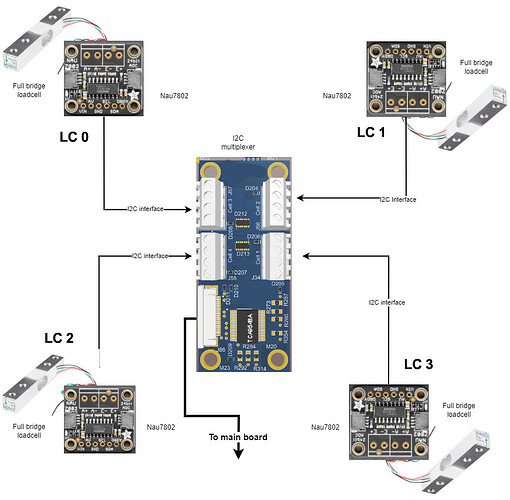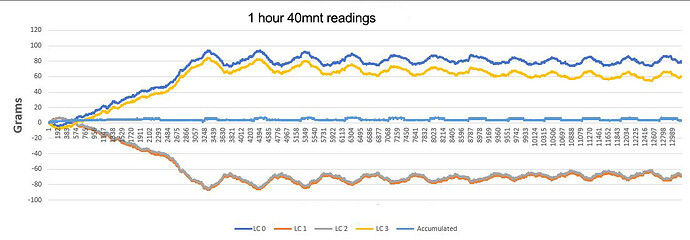I've been working on a project involving a machine utilizing four load cells to measure the weight of liquids accurately. The system is functioning well, precisely determining the weight of the placed object. No issues there with 15 machines. However, a curious observation has arisen.
The load cells, arranged diagonally, exhibit intriguing behavior. Two diagonally placed load cells register increases while the other two show decreases, yet the cumulative weight remains consistent. These all 4 cells share identical configurations.
Furthermore, under stable conditions, occasional fluctuations of up to 200 grams in the opposite direction have been noticed. Strangely, the actual combined weight remains unchanged. Could anyone offer insight into these peculiar occurrences?
These graphs display relative or absolute readings relative to the first load cell reading. Here, you can clearly observe weight fluctuations in individual load cells, exhibiting opposing trends. Interestingly, the cumulative weight remains unchanged.


